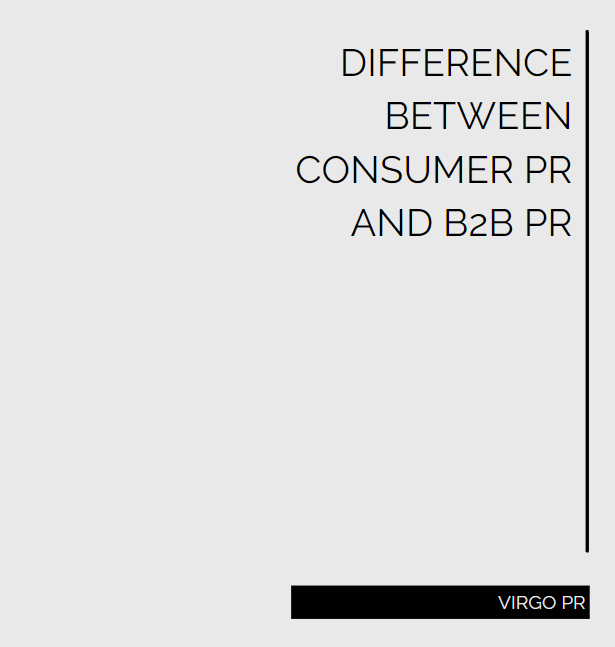Consumer PR is largely about how businesses communicate with their target audience. Nowadays consumers are different because they are more proactive and conscious.
They do not respond to paid advertising as much as they do to interactions with organizations on social media. They want quick customer service and meaningful connections.
This is where PR professionals come in, because they help create meaningful connections between organizations and their customers. B2B PR tries to improve and strengthen relationships between businesses, and to build brand identities.
There are certain differences between the two types of PR, as given below.
Knowing the Customers Matter
The target of B2B PR might seem similar to that of consumer PR, as they are usually tech managers and the C-suite, or the executive- level managers within an organization. The target audience of consumer PR could be extremely varied.
This does not imply that there could be no variety in the target audience of B2B PR. It’s just that determining the target audience for B2B is more straightforward. For consumer PR, the target could be a housewife or a student.
The Nature of Desired Coverage
The client goals for both consumer PR and B2B PR might have certain common areas, but the type of coverage each seeks may be very different. Consumer PR includes engaging influencers on social media platforms, and a preference for paid placements.
The target audience for consumer PR is widespread and varied, and hence the outreach strategy can also be diverse. B2B organizations prefer to participate in activities like giveaways. They also conduct trade campaigns.
Creativity
Both types of PR require creativity. B2B PR professionals need to think about how brands will respond. B2B PR faces the challenge of coming up with topics for industry roundtables, while consumer PR needs to come up with national features for consumers.
Connecting with Audiences
B2B PR uses several ways to connect with the audience, which include going through business and trade publications that seem purposeful for the reputation of their clients. They also have to be aware of major business and economic trends, and should be able to clearly convey the client’s mission and value proposition.
PR companies should be able to explain to media professionals why their clients require a certain type of coverage. These companies also utilize data points to give their clients an edge above their competitors. Finally, they focus on transparency.
Consumer PR professionals have somewhat similar duties. One of them is to clearly understand the mission and value proposition of their clients. The consumer PR professionals do not need to capitalize on unique data points, and they read material that’s more about people and families.
Consumer PR professionals need to connect with bloggers and influencers, and require them to produce content that is focused on consumers. This type of consumer needs to read and digest content that is more people-centric. For instance, they read content about a family vacation. They need to know about the latest trends, and hip places.

